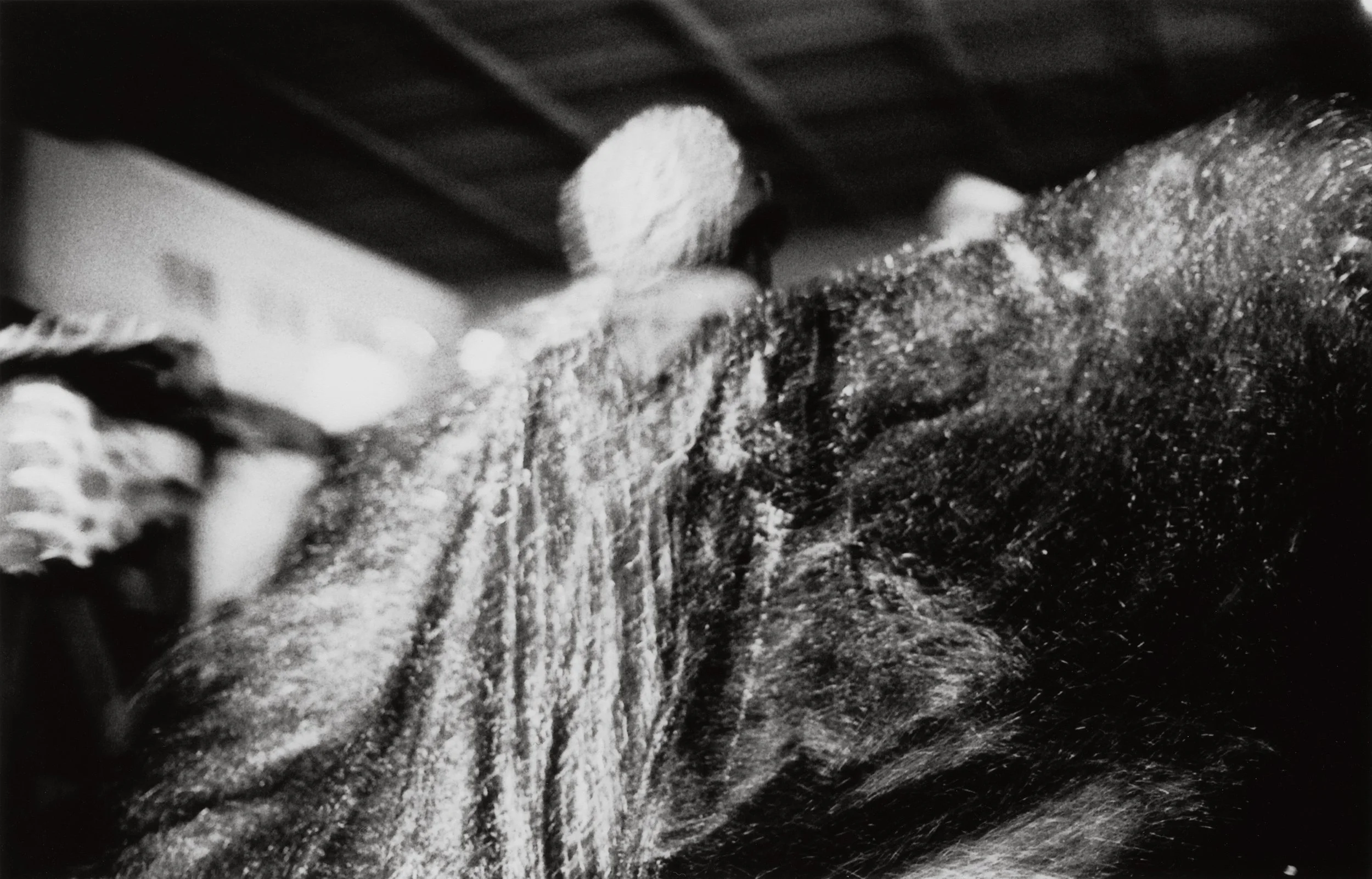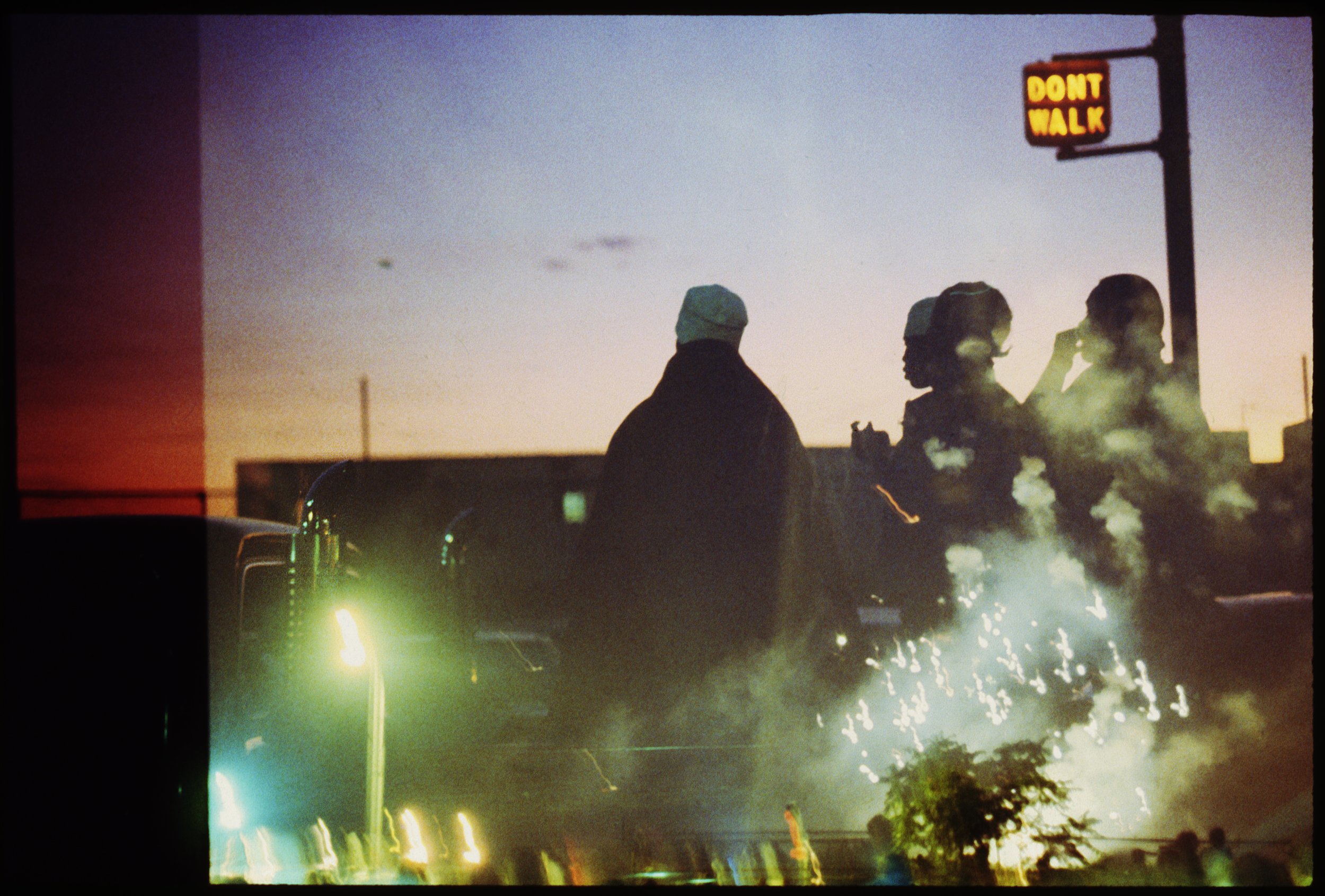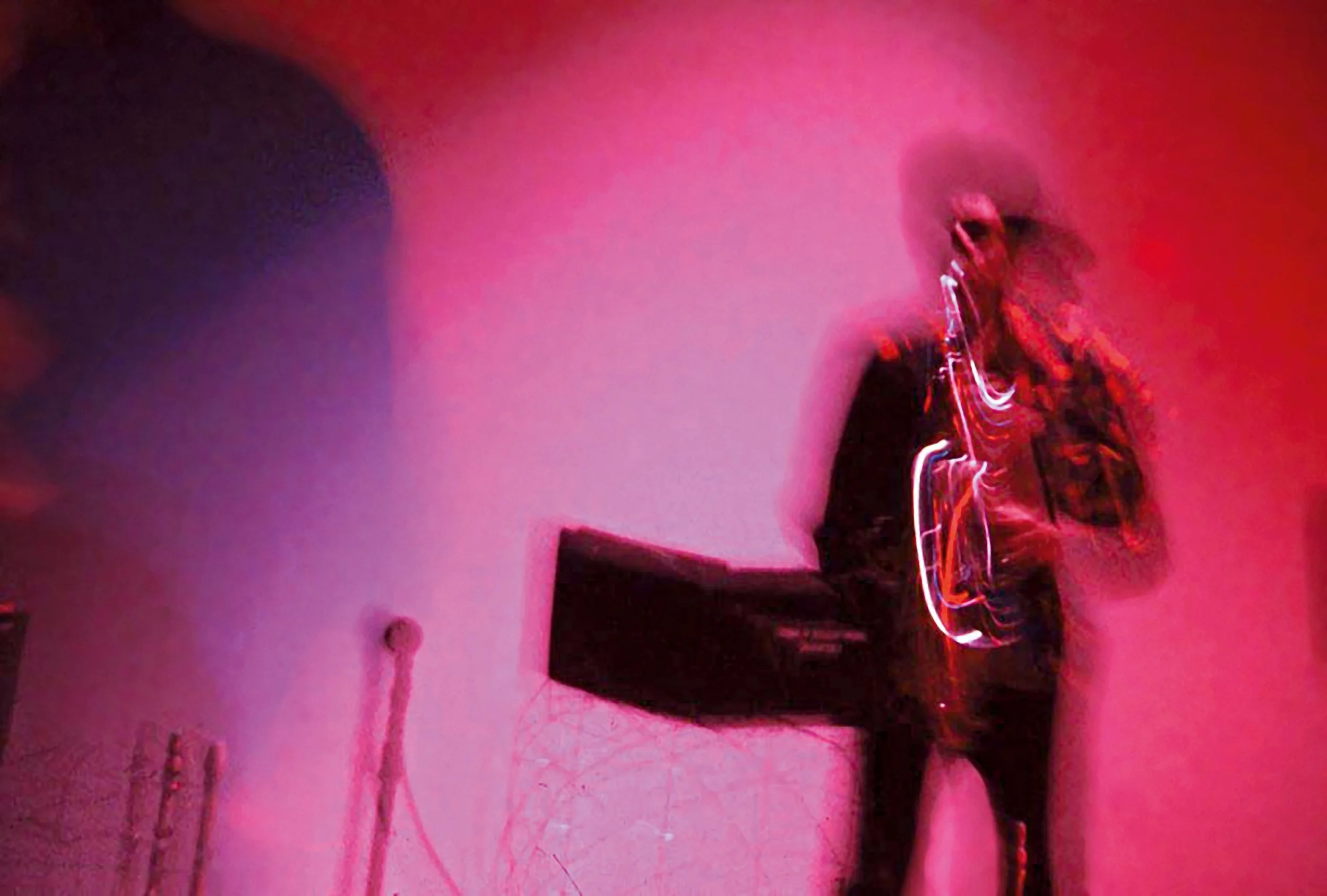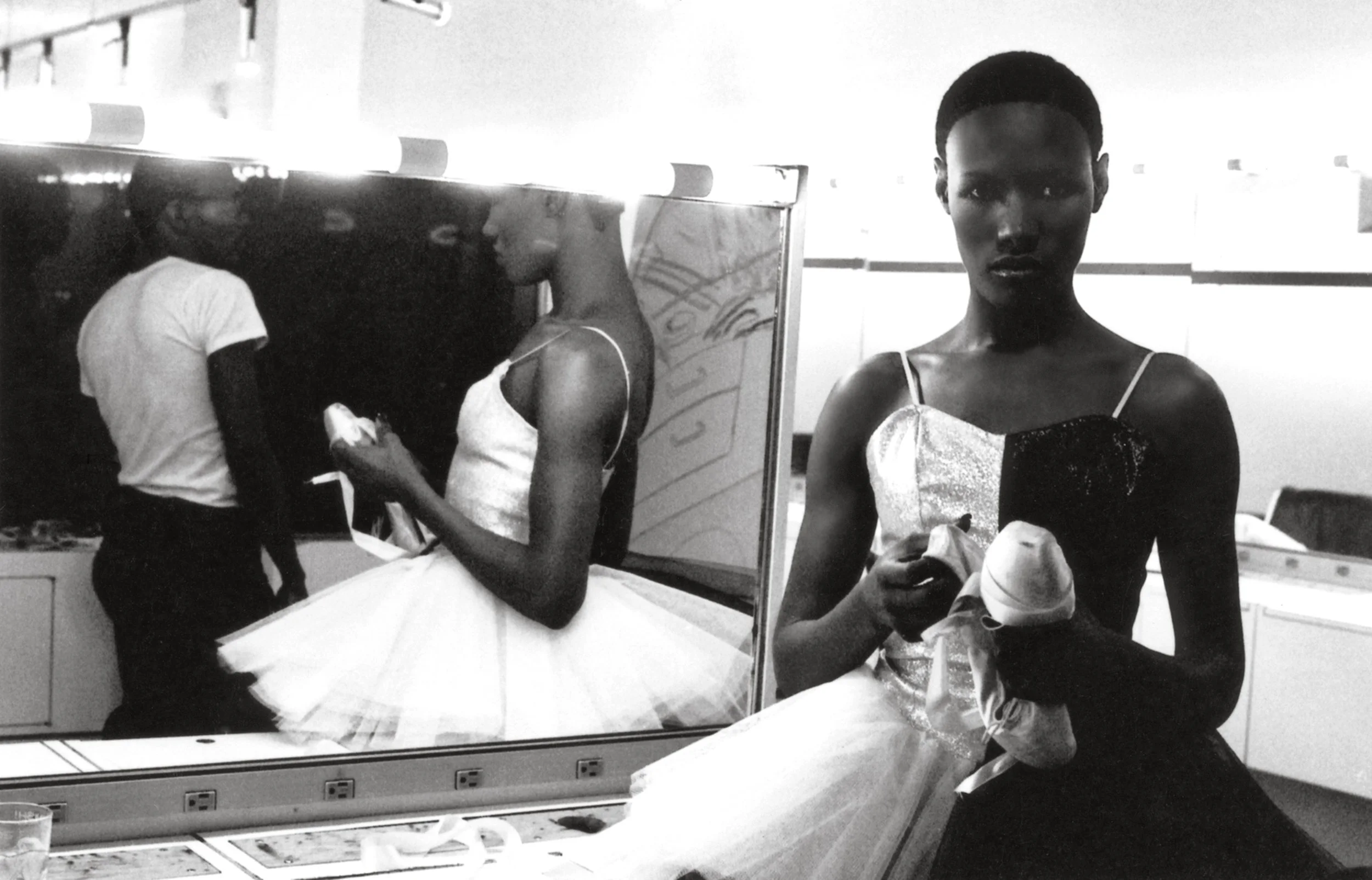Ming Smith: Feeling the Future | Contemporary Arts Museum Houston
Ming Smith, Amen Corner Sisters (Harlem, New York), 1977. Archival pigment print, 24 x 36 inches. Image and work courtesy Ming Smith Studio.
Written By Nicole Miller
On display at the Contemporary Arts Museum Houston (CAMH) is Ming Smith: Feeling the Future, a comprehensive survey of Smith’s evocative work in lens-based media from the early 1970s to the present. Her experimental approach traverses through portraiture, abstract and street photography, as well as more recent projects in avant-garde film, sound, and installation. She employs surrealist techniques, such as collage, and applies darkroom manipulations and in-camera methods to highlight the vibrancy and complexity of everyday Black life in America. Smith also celebrates Black cultural expression and representation by producing portraits of prominent Black figures, including Nina Simone, Grace Jones, and Alice Coltrane. Her iconic photography practice led Smith to become the first Black woman photographer to have her works acquired by The Museum of Modern Art.
Ming Smith, Sun Ra Space I, 1978. Archival pigment print, 40 x 60 inches. Image and work courtesy Ming Smith Studio.
Smith accentuates her photographs with light to construct an ethereal experience. In the 1978 image above, Sun Ra Space I, Smith ingeniously and intuitively refuses to focus the lens, creating a blur effect and a sense of movement, which allows the audience to immerse themselves in Sun Ra’s raw energy. The lack of color also contributes to the elusive quality of the photograph, as the black and white serves to remove the viewer further from reality. Sun Ra, an African American jazz composer and the subject of the photo, was the perfect muse for Smith, as jazz was a key influence in her practice. She has compared the professional improvisation of her photography to jazz music: “in the art of photography, I’m dealing with light, I’m dealing with all these elements, getting that precise moment. Getting the feeling—to put it simply, these pieces are like the blues.”
Ming Smith, Acid Rain (“Mercy, Mercy Me,” Marvin Gaye), 1977. Archival pigment print, 24 x 36 inches. Image and work courtesy Ming Smith Studio.
In Acid Rain ("Mercy, Mercy Me," Marvin Gaye), light appears to have its own ambitions and personality. This abstract image is created through long exposure, as the slow shutter speeds artistically blur the photograph, producing a dynamic, majestic atmosphere. Smith characterizes her photography as a “search for the cosmic by following the light.” Her exploration into the figurative challenges our perceptions of reality. What we see may be unreliable, even inflexible, and Smith uses her camera as a tool to embrace the pursuit of alternative truth. She emboldens her audience with her unique perspective, inviting us to engage with our own imaginations in order to gain a better understanding of our less accessible, deep emotional states.
Ming Smith, Red Hot Jazz II, 1979. Archival pigment print, 24 x 36 inches. Image and work courtesy Ming Smith Studio.
Ming Smith, Grace Jones at Cinandre, 1974. Archival pigment print, 24 x 36 inches. Image and work courtesy Ming Smith Studio.
Ming Smith is revered for her documentation of numerous musical greats, including Grace Jones, the famous Jamaican-American model, singer, and actress. The 1974 image above, Grace Jones at Cinandre, represents the power of Black femininity. Captured in soft focus, the fluid elements of the photograph are emphasized, prompting Jones’ fierce gracefulness to radiate from her portrait. Jones is known for her androgynous style, defying conventional gender norms. Yet in Smith’s photograph, Jones is dressed as a ballerina. Ballet is known for its historically problematic stereotyping and toxic feminine ideals. However, Jones’ piercing gaze and strong grip of her pointe shoes conveys a resilience that is required to occupy and thrive in spaces Black women are traditionally excluded from. Smith effectively presents honest portrayals of Black art that illustrate the joy and empowerment of the Black community.












